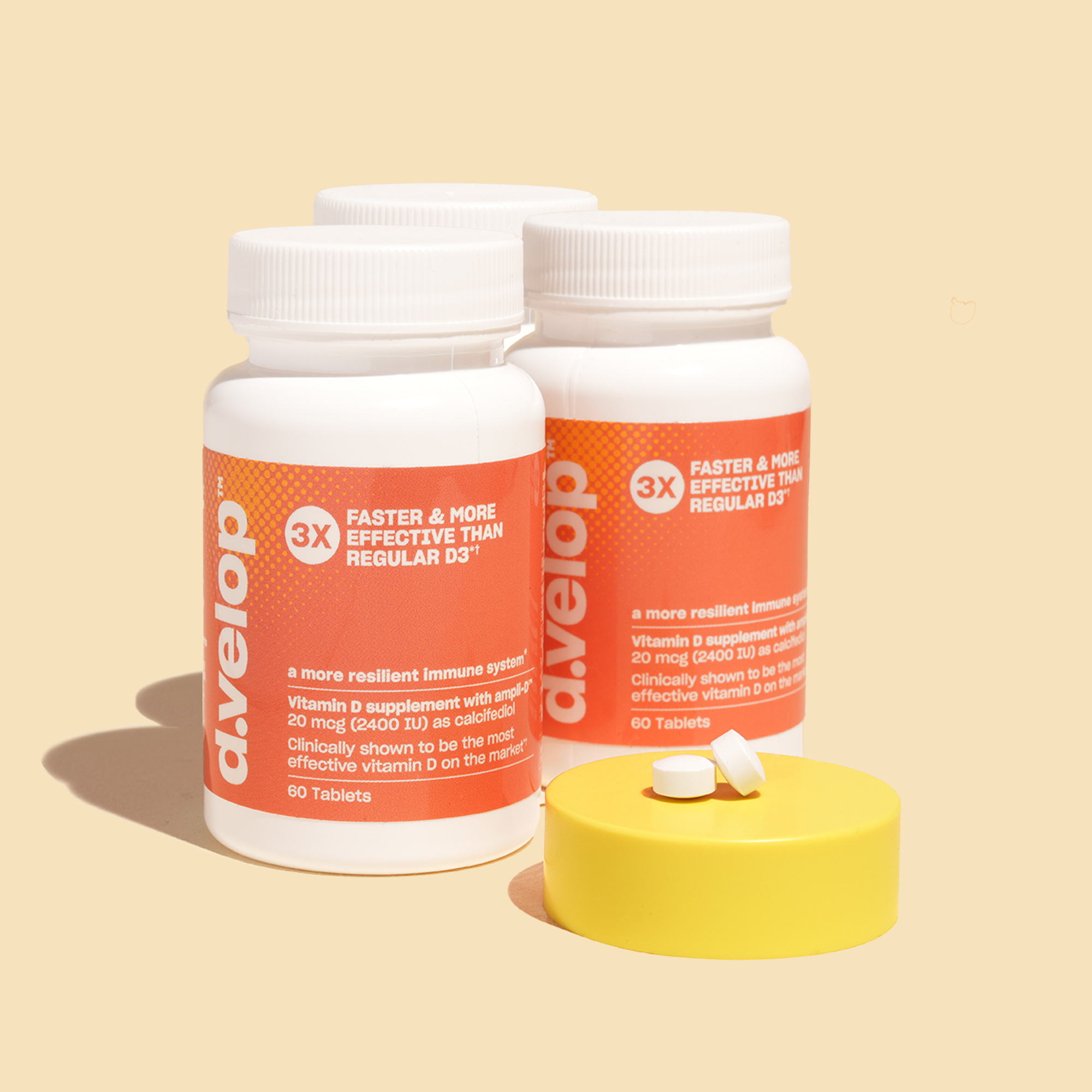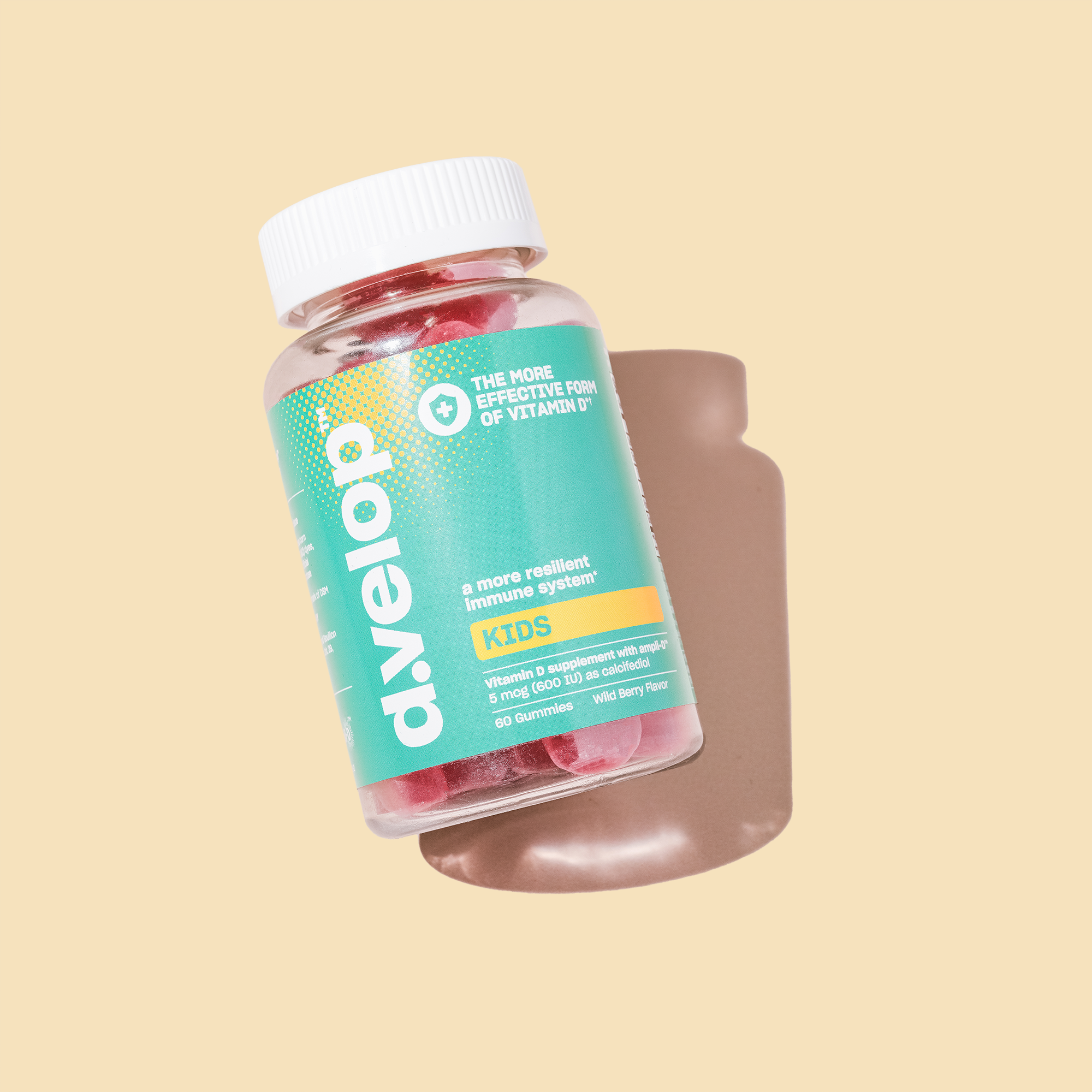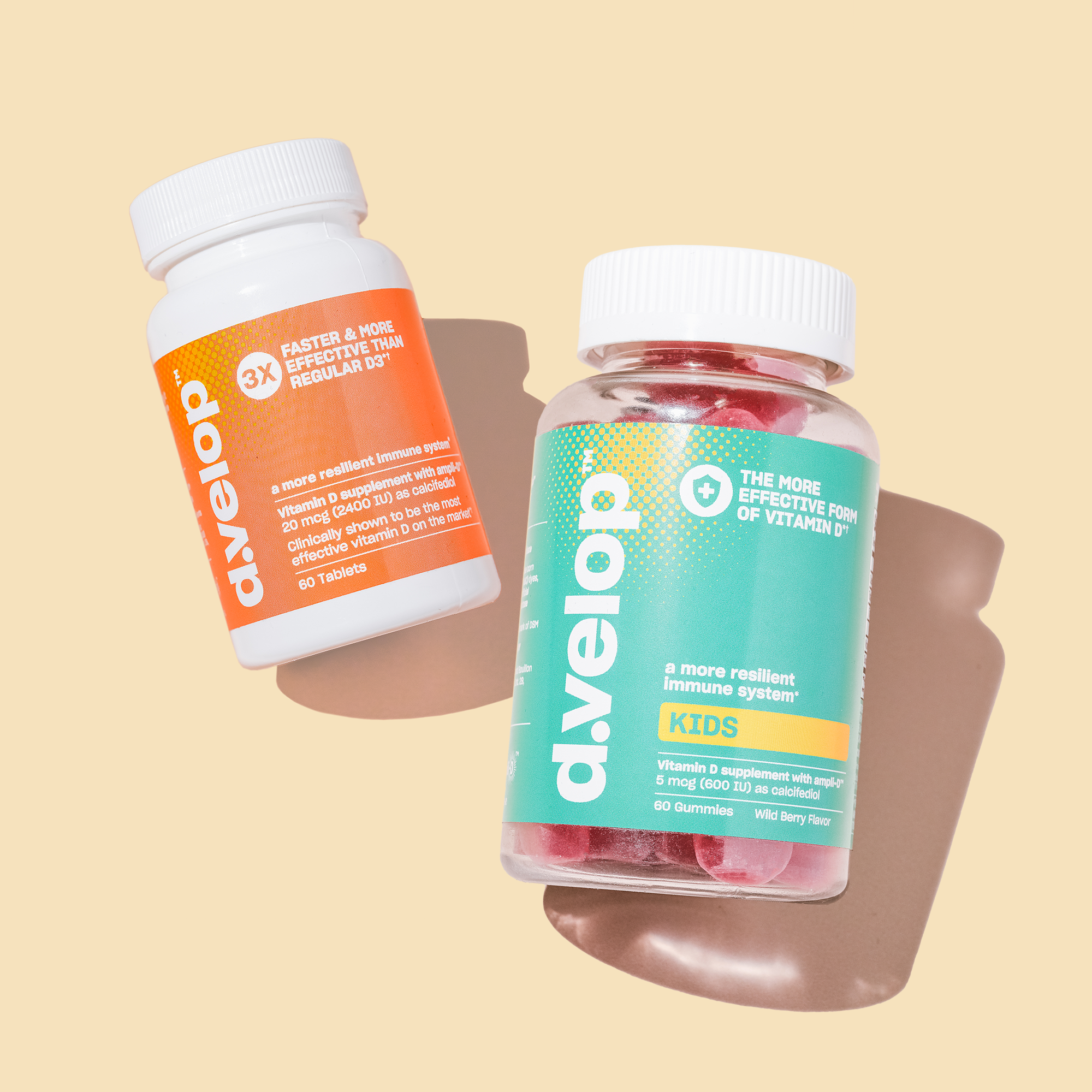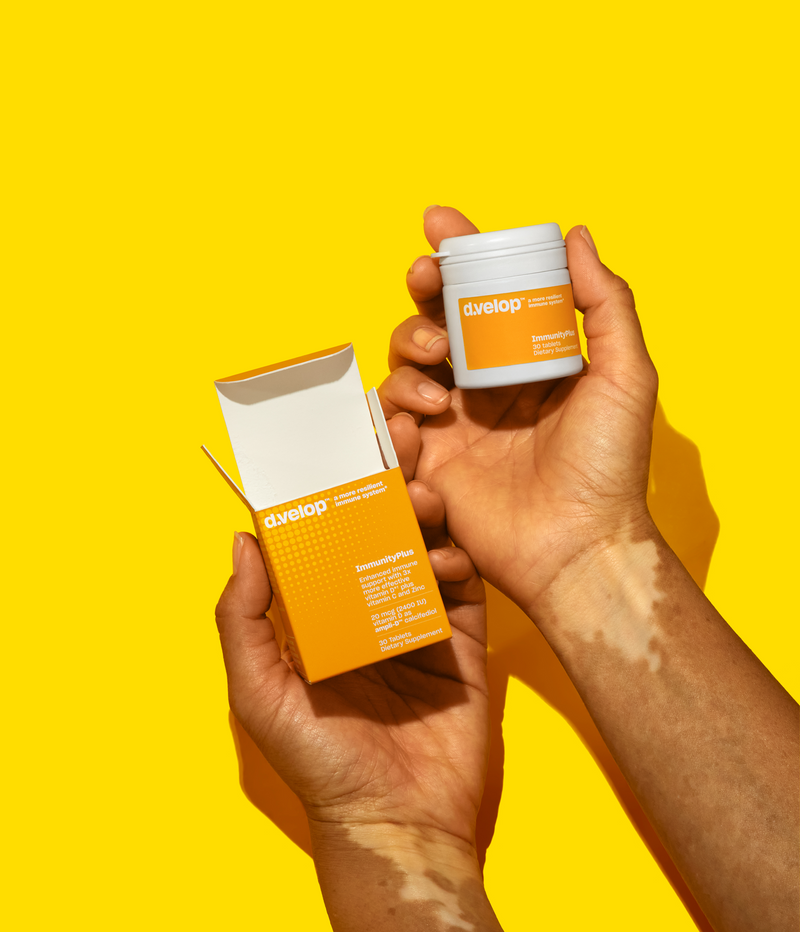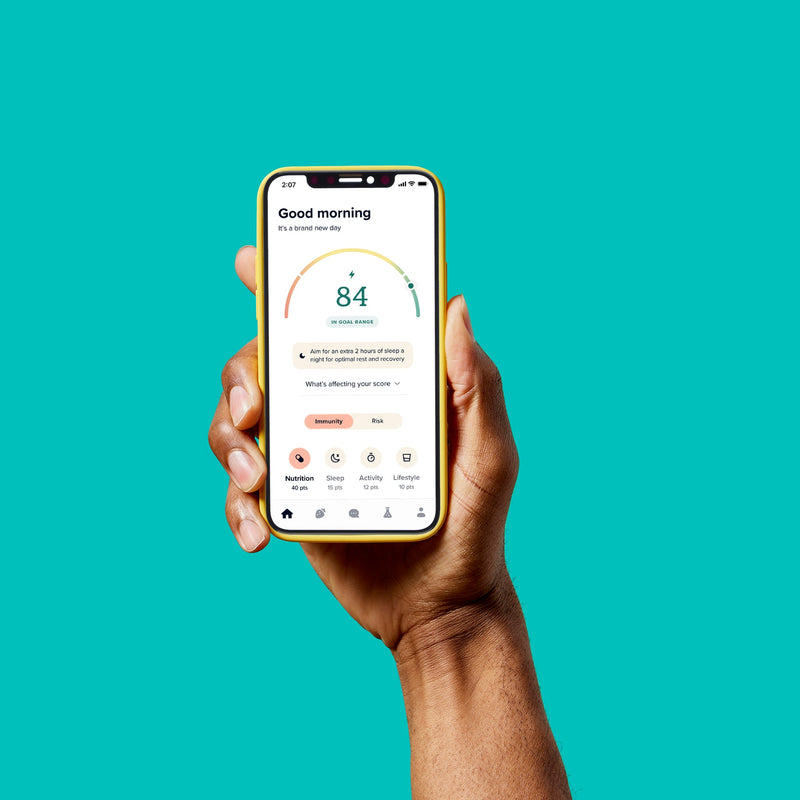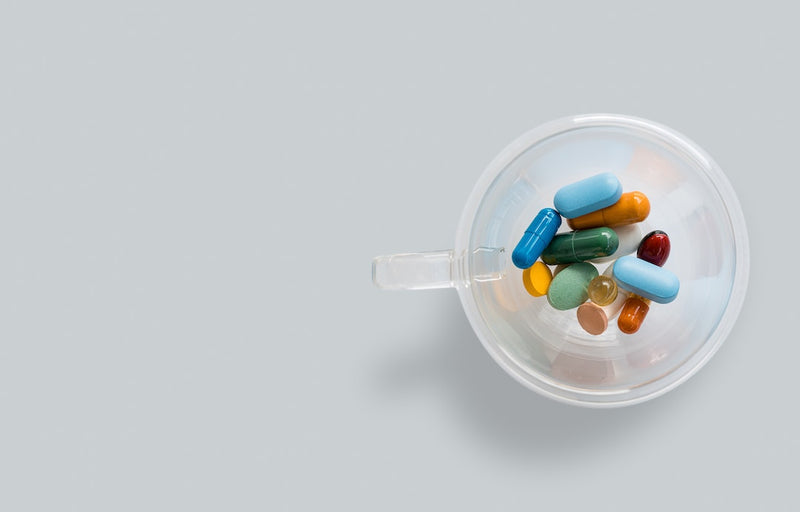Is there such a thing as too much vitamin D? Yes, it’s possible. Although it can be difficult to get enough vitamin D naturally through food and sunlight, you’ll want to know how to be careful to avoid getting too much of specific nutrients. Proper vitamin D doses vary between people of different ages and conditions. We like to think of vitamin D as the “Goldilocks” vitamin. You don’t want too much vitamin D, and you don’t want too little. Rather, you want to get just the right amount to support your health and wellbeing. So let’s dive in!
How much vitamin D is too much?
First, let’s start by understanding what the recommended intake is per day. Vitamin D recommendations are shown on food and supplement labels in International Units (IUs) and micrograms (mcg). The recommended daily allowance (RDA) of vitamin D currently is 400 IU (10 mcg) for children up to 12 months of age, 600 IU (15 mcg) for people ages 1-70 daily, 800 IU (20 mcg) for adults over age 70, and 600 IU (15 mcg) for women who are pregnant or breastfeeding.
What if I go over the RDA for vitamin D?
Between day to day differences in our environments, diet and supplementation routines it’s tough to know exactly how much vitamin D our body is processing on a daily basis. Many studies have been conducted to come up with the safest and most effective RDAs for nutrients. So while there may be room for some flexibility, there is a limit to the amount of vitamin D recommended due to health effects. This limit, known as the “tolerable upper intake level” or “upper limit” (UL), is set as the maximum daily intake that is unlikely to cause adverse health effects. Beyond this level, you may find yourself in dangerous territory.
The Institute of Medicine (IOM) has set the upper level intake of vitamin D for adults to 4000 IU (100 mcg) daily, 3000 IU (75 mcg) daily for children aged 4-8 years old, 2500 IU (63 mcg) for kids aged 1-3, 1500 IU (38 mcg) for babies 6-12 months old, and 1000 IU (25 mcg) daily for infants 0-6 months. Even with the UL, it is important to know that some people may have health conditions, or genetic variations that could require more or less supplementation than others. Therefore, it is always important to work with your doctor to understand your individual needs.
d.velop™ offers an array of Vitamin D products that keep these recommendations in mind such as d.velop™ Vitamin D, d.velop™ Vitamin D Kids Gummies, and d.velop™ ImmunityPlus.
What are the consequences of too much vitamin D?
While vitamin D toxicity (also known as hypervitaminosis D) is rare, it can happen after “over-supplementing”. Oftentimes if a person has found that they’re getting too much vitamin D, it is less likely to be due to their time spent in the sun or what foods they’ve eaten, but rather from excessive supplementation. This is due to the fact that your body generally regulates the amount of vitamin D it is exposed to, whereas supplements go directly into your system.
Due to vitamin D’s role in managing calcium and phosphorus in the body, symptoms of getting too much vitamin D are related to high levels of calcium in the blood which is known as “hypercalcemia”. Someone with vitamin D toxicity may or may not present symptoms, depending on their age or physical condition. Some of these symptoms may include headaches/confusion, nausea, abdominal pain, painful muscles, kidney damage, and high blood pressure.
If left unchecked, hypervitaminosis D may progress from hypercalcemia to the formation of calcium stones, accompanied by bone pain and issues with the heart or kidneys.
How do I know if I’m getting the right amount of vitamin D?
- Understand what your vitamin D blood levels are
- If you are concerned that you may have too little or too much vitamin D in your system, the best thing you can do is take a vitamin D test to measure your current levels. If you have found that you’re under your recommended levels, you might consider taking a daily vitamin D supplement. Before starting any dietary supplement, we recommend consulting with your doctor or healthcare provider.
- Understand how much vitamin D your body needs each day
- Talk to your doctor or healthcare provider about your current diet, lifestyle and routines. They’ll help you determine how much vitamin D you will need and whether or not a supplement is right for you.
- The d.velop™ app has Registered Dietitians available to discuss if vitamin D may fit into your current lifestyle, and to help you better understand what your vitamin D blood levels mean.
- Follow the guidelines!
- Whether these are the RDA, or doctor’s orders, follow evidence-based recommendations on what is best for your situation. While it may be tempting to try and “rush the benefits”, this can have serious health consequences.
Feel your best today, with d.velop™’s family of products.
Tebben et al. 2016. Vitamin D-Mediated Hypercalcemia: Mechanisms, Diagnosis, and Treatment, Endocrine Reviews, Volume 37, Issue 5, Pages 521–547
